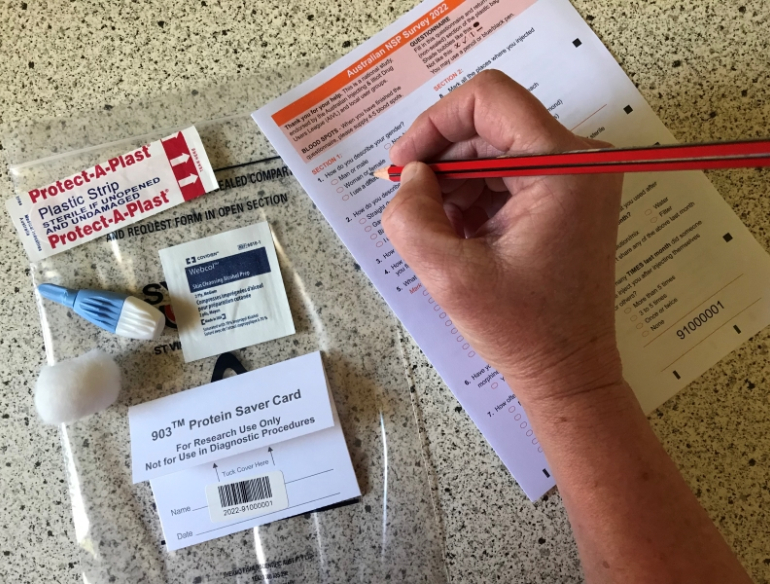People who inject drugs (PWID) are at risk of HIV transmission and are the key population affected by hepatitis C virus (HCV) infection globally. HIV and HCV prevalence estimates among PWID are essential for planning, implementing, and evaluating blood borne virus prevention programs.
The Australian Needle and Syringe Program Survey (ANSPS) provides serial point prevalence estimates of HIV and HCV antibody prevalence, HCV RNA prevalence and monitors sexual and injecting behaviour among PWID in Australia.
The ANSPS is conducted annually at more than 50 needle and syringe program (NSP) services over a one to two week period in October each year. The project is conducted in all states and territories and recruits between 2,000 – 2,500 NSP attendees each year. Participants complete a brief self-administered questionnaire and provide a capillary blood sample which is subsequently tested for HIV and hepatitis C antibodies and HCV RNA.
The ANSPS has been conducted since 1995 and annual results are published in the ANSPS National Data Report. HIV prevalence has remained low at 2.5% or less nationally in all years since 1995, while HCV antibody prevalence has remained high at 32% or more nationally. HCV RNA testing commenced in 2015 and prevalence declined from 51% in 2015 to 8% in 2024.
Findings highlight the benefits of investing in robust sentinel surveillance to monitor trends in drug use, sexual and injecting risk behaviour, treatment uptake and prevalence of blood-borne viral infections among PWID. Results from the ANSPS continue to inform NSP policy and practice in Australia, including the Return on Investment report evaluating the impact and cost effectiveness of NSPs on prevention of HIV and HCV infections among PWID (2010) and monitoring progress against the objectives of Australia’s National Blood Borne Virus National Strategies.
ANSPS National Advisory Group; Collaboration of Australian NSPs; ACT Government, ACT Health; Australian Injecting and Illicit Drug Users League (AIVL); Government of South Australia, SA Health; Government of Western Australia, Department of Health; Northern Territory Government, NT Health; NSW Government, NSW Health; Queensland Government, Queensland Health; Tasmanian Government, Department of Health; Victorian Government, Department of Health
Australian Government Department of Health and Aged Care



